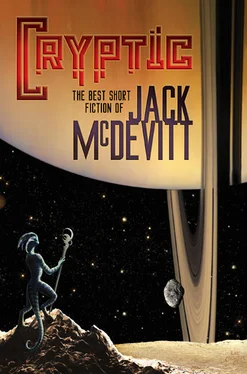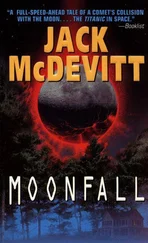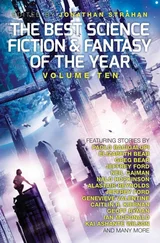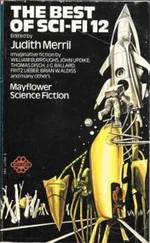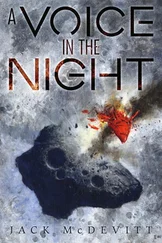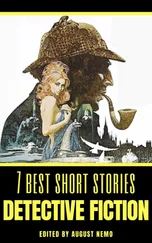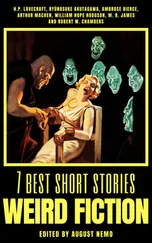Джек Макдевитт - Cryptic - The Best Short Fiction of Jack McDevitt
Здесь есть возможность читать онлайн «Джек Макдевитт - Cryptic - The Best Short Fiction of Jack McDevitt» весь текст электронной книги совершенно бесплатно (целиком полную версию без сокращений). В некоторых случаях можно слушать аудио, скачать через торрент в формате fb2 и присутствует краткое содержание. Издательство: Subterranean Press, Жанр: Фантастика и фэнтези, на английском языке. Описание произведения, (предисловие) а так же отзывы посетителей доступны на портале библиотеки ЛибКат.
- Название:Cryptic: The Best Short Fiction of Jack McDevitt
- Автор:
- Издательство:Subterranean Press
- Жанр:
- Год:неизвестен
- ISBN:нет данных
- Рейтинг книги:3 / 5. Голосов: 1
-
Избранное:Добавить в избранное
- Отзывы:
-
Ваша оценка:
- 60
- 1
- 2
- 3
- 4
- 5
Cryptic: The Best Short Fiction of Jack McDevitt: краткое содержание, описание и аннотация
Предлагаем к чтению аннотацию, описание, краткое содержание или предисловие (зависит от того, что написал сам автор книги «Cryptic: The Best Short Fiction of Jack McDevitt»). Если вы не нашли необходимую информацию о книге — напишите в комментариях, мы постараемся отыскать её.
Cryptic: The Best Short Fiction of Jack McDevitt — читать онлайн бесплатно полную книгу (весь текст) целиком
Ниже представлен текст книги, разбитый по страницам. Система сохранения места последней прочитанной страницы, позволяет с удобством читать онлайн бесплатно книгу «Cryptic: The Best Short Fiction of Jack McDevitt», без необходимости каждый раз заново искать на чём Вы остановились. Поставьте закладку, и сможете в любой момент перейти на страницу, на которой закончили чтение.
Интервал:
Закладка:
I dropped lower and flew in wide circles that took me well out to sea on each pass. There was no sign of a submerged house. After an hour or so, I flew listlessly over the mouth of the bay, suspecting the entire story was mythical. I was about to give up when I saw a shadow in the water.
I lobbed a cone buoy over the side, came around and, too absorbed perhaps to pay attention to what I was doing, cut power before I was fully down. The skimmer chopped heavily into the water, bounced, jabbed its nose below the surface, and threatened briefly to turn over.
I blamed it on the lighter gravity, took a quick look around for damage (there was none), and got out a deep-sided glass dish I’d brought along for submarine viewing. There was a house down there. The light wasn’t good, but I could see its roof.
It looked intact. That struck me as being exceedingly unlikely, until I noticed a small ridge cutting diagonally down from the shoreline and across the bottom of the basin. Driven into it, and now broken off, were a pair of stems of the type that provided nominal support for a Gantner light system.
That meant Uxbridge’s house had been entirely, or at least partly,above the flood. But the water had got at the projector and shorted it out. The increased weight had snapped the stems, and the place had gone to the bottom.
It was a three-level structure, and it looked like stone rather than the standardized materials generally in use on Fishbowl. The external appurtenances, stylized cupolas, belvederes, porticoes, and so on that characterize most of the wealthy homes on Fishbowl (and on Rimway,for that matter) were particularly in evidence here. Add small, round windows, and the illusion of an exotic sea beast lying quietly in the sand was complete.
But the windows were dark, and only fish swam through its abandoned rooms.
It had no tower.
I’d brought a breather with me, and I knew that the next rational step was to use it. But the house was far down, and the suspicion of what I might find prevented my unpacking the unit. Instead, I sat rocking gently on the skimmer, feeling like a damned fool.
After a while, I started the engine and rolled angrily into the bright clear sky.
6.
When Jon Hollander looks through the windows from the office in which the Pellinor Chess Club keeps its records, he can see a broad oval pool. Directly beyond the pool crouches a heavy, triple-tiered oblate building utterly out of place among the crystal structures of the Survey complex. This is the Belarian Field Museum. It is, according to a plaque mounted at the front entrance, an accurate representation of architectural styles to be found at Ysdril West, one of the major excavation sites in that world’s southern hemisphere. It is accurate rather than exact, because it has been necessary to increase the size of doorways, and raise ceilings, to accommodate human visitors.
One recognizes immediately that it is the work of a primitive race. Constructed of quartz, the Field Museum is set within a pavilion ringed by flapping pennants. There are few windows, and the upper tiers are progressively recessed, creating an effect somewhat like that of a ziggurat.
The quartz blocks are rough-hewn and joined with cement. Nightmare creatures with bared fangs and talons guard the entrances, and hieroglyphs have been stenciled into the living rock, marking the four cardinal points of the compass. The inscriptions are delicate, sylphlike engravings, utterly out of character with the ponderous stone blocks and doors.
I’d paused on the west portico to examine one, tracing the lean characters with my fingers. A plate translated: “In the hour of need, I am with you.”
The Museum’s windows were small, recessed, and barred. Another plaque announced that the structure was a place of worship, but it felt like a fortress.
I wasn’t entirely ignorant about the Belarians. They’d been small creatures, by human standards, seldom surpassing a meter in height. Artists’ renderings of their appearance were disquieting, however: pale, bloated, gas-filled bodies, not unlike the amoeba-like quill.
They never achieved a technological culture, and the last of them went to their reward a million years ago. Standing in the shadow of that gloomy pile, I wondered how such creatures could have developed a written language. Or, for that matter, juggled building supplies.
I entered the Field Museum through a heavy square-cut arch. The ground floor was crowded with display cases, statuary, tools, and assorted other artifacts. An attendant in Survey’s light and dark green uniform stood beside a stone altar, behind which several viewing booths had been installed. To my right, a ramp ascended to the upper levels.
I was surprised to discover an abundance of natural light emanating from a circular courtyard. The overall effect was that somehow, within these walls, time had slowed from its natural pace, and become somehow quite palpable.
There was only one other visitor, a brittle, elderly man who was sketching an inscription from a hexagonal stone mounted over a display board. I walked among the artifacts, little figures carved from black rock set in gleaming cases with neat white cards identifying their probable age and use.
There were scrapers and cutters and rakeheads and spearpoints. Obviously, the Belarians had been more substantial than they looked. There were figures of animals and dwellings, and fantastic creatures that might have been real or mythical. One case contained several hundred tablets, all engraved with rows of ideographs. A plate placed them quite early in Belarian history. They had not yet been translated. But they resembled the somewhat later materials from which the Book of Life , with its immortal accounts of Cordelet and the pillars of the world, had been derived.
“They had paper,” said a voice behind me. “It’s ironic that only the earliest written materials have survived. Only the tablets.” It was the old man. He was about my size, clean-shaven except for a neatly-trimmed white mustache. (That was not then the style on Fishbowl, and marked him as a helpless relic.) “Even the inscriptions on their buildings are from early religious or ethical texts. The books are all gone.”
“I’m Tiel Chadwick,” I said, offering my hand.
He took it in a firm grasp. “M’Kay Alexander. You may call me Alex.”
I described myself as a student from Rimway, and we talked for a while about Belarian art. Which meant primarily architecture, since little else remained.
“How did they produce anything?” I asked. “I mean, they had no hands.”
“They had a highly flexible sheath,” he replied. “Pseudopodal extensions. If you look closely, you can see them on some of the artifacts. Here—.” He indicated a pair of figures in an adjoining case. They did indeed seem to have limbs. They emerged however from disconcerting sites, from abdominal and head areas. I had the overall sense that I was looking at a creature wrapped in a sheet.
Okay: that seemed reasonable enough. But what about the buildings? You can’t move a boulder with a pseudopod. “They must have had heavy equipment of some kind.”
“Not that we could find, Tiel. You, uh, don’t mind if I call you Tiel?”
“Of course not.”
“Good.” His gaze swept over the display cases and carved blocks. “No,” he said, “it’s difficult to sort things out; there’s so little left. But I don’t think they ever had the sort of machines that would be required to haul these stones around.”
“How do you know?”
“Their psychology. They were simply not a technological race. Did you know their culture was twenty thousand years old when they died off? And they never got past a medieval stage.”
Читать дальшеИнтервал:
Закладка:
Похожие книги на «Cryptic: The Best Short Fiction of Jack McDevitt»
Представляем Вашему вниманию похожие книги на «Cryptic: The Best Short Fiction of Jack McDevitt» списком для выбора. Мы отобрали схожую по названию и смыслу литературу в надежде предоставить читателям больше вариантов отыскать новые, интересные, ещё непрочитанные произведения.
Обсуждение, отзывы о книге «Cryptic: The Best Short Fiction of Jack McDevitt» и просто собственные мнения читателей. Оставьте ваши комментарии, напишите, что Вы думаете о произведении, его смысле или главных героях. Укажите что конкретно понравилось, а что нет, и почему Вы так считаете.
